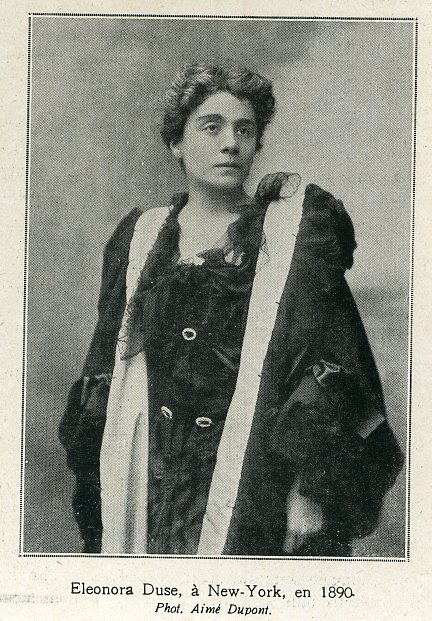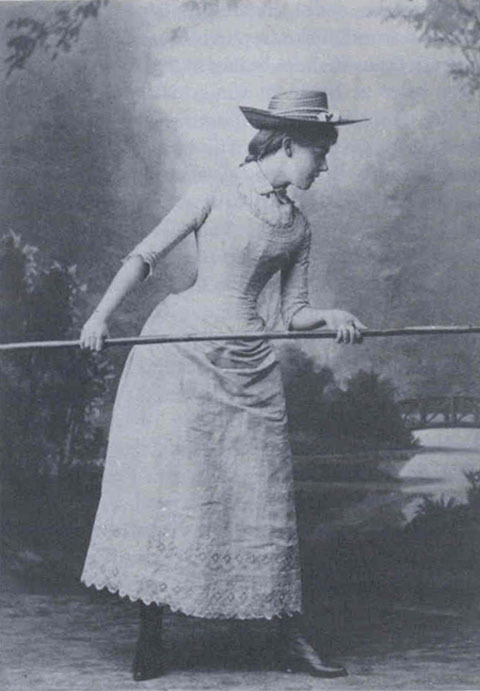Her Choice
Ruth Schor, an Ibsen scholar, focuses on modern drama, theatre and cultural history with particular emphasis on Ibsen and the German-speaking avant-garde. She provides her own perspective on THE LADY FROM THE SEA, providing context about the role of choice in this play and other works by the Norwegian playwright.

“My consolation in moments of spiritual anguish is The Lady from the Sea,” the famous Italian actress Eleonora Duse writes to a friend at the beginning of the twentieth century, “she is beautiful and comforting – ever-changing, like the sea itself.” With this assessment, Duse gets to the heart of the play’s problem: is the protagonist, Ellida, free, and if so, what kind of freedom does she have? After a celebrated success playing in and producing Ibsen’s Rosmersholm, Duse embarks on another journey to seek an understanding of Ellida’s freedom. But the translation she has does not suffice and she crosses out the word “choice” and replaces it with the word “decision.” With this small edit, Duse was coming to grips with a central question that dominates discussions about The Lady from the Sea to the present day. Is the freedom to decide true emancipation, or does it lead the woman, as wife, right back into the confinement of marriage? After all, the play has little of the dramatic resistance to domestic life that can be found in other Ibsen plays. This play’s “happy ending” is a rarity. Preceded by Rosmersholm and succeeded by none other than Hedda Gabler, The Lady from the Sea has caused puzzlement over its appeasing tone since it was first performed. What makes this woman capable of converting the weight of her past into a source of transformation without escaping?
Lou Andreas-Salomé, one of Ibsen’s contemporaries, published a book about Ibsen’s heroines from Nora to Hedda in 1892. She finds an explanation in Ellida and Dr. Wangel’s mutual ability to “consider the other’s needs” and attributes an equally healing quality to the re-connection between Ellida and Hilde, Wangel’s child from the previous marriage. If we take this explanation seriously, does Ellida’s story then suggest that reconciliation is the true goal, and in fact there was hope for some of Ibsen‘s previous heroines? In short, the play calls into question the actions of other heroines. Why did Hedda Gabler have to crush that same hope? Are we meant to reconsider Nora’s exit in A Doll’s House? These are only some of the unresolved questions Andreas-Salomé leaves us with.

Despite its more conventional plot, The Lady from the Sea does join Ibsen’s other plays in its openness to ambiguity. Similar to A Doll’s House, The Lady from the Sea presents its audience with an outcome that seems conclusive, and yet, leaves just enough inconclusive openings to fuel the imagination about what might come next. In The Lady from the Sea, this question mark is brought to us by the next generation—through Bolette’s subplot, a marriage of convenience in exchange for an education. And most decisively, in The Master Builder, a play Ibsen published four years after The Lady from the Sea, the same Hilde Wangel appears as a young temptress in her twenties who has escaped her father’s “cage” — with no mention of a stepmother.
At this point, even Lou Andreas-Salomé needed to reconsider. A few months after her book came out in 1892, The Master Builder was published. She hastily writes a review admitting that the re-appearance of Hilde Wangel sheds new light on the ending of The Lady from the Sea. A century later, Susan Sontag takes the significance of Hilde Wangel’s return even further. Her adaptation for Robert Wilson’s famous production concludes with a sense of unease about the domestication of this sea creature. Ibsen, she claims, made Hilde Wangel reappear in the later play, when he developed second thoughts about The Lady from the Sea. Originally titled The Mermaid, Sontag says, the play draws on a folkloric theme about untamable sea creatures that do not belong on dry land.
Whichever interpretation one might be drawn to, it is evident that The Lady from the Sea, and moreover Ibsen’s plays in general, continue to generate a sense of mystery and curiosity by remaining in constant conversation with each other. It is arguably one of Ibsen’s most distinct talents to ensure an audience never gets too comfortable. As he expressed it himself, his works can only be understood when read in their entirety — when read as part of an ongoing series. Ibsen perfectly timed this series by publishing a new play every two years just in time for the Christmas season. By the time he wrote The Lady from the Sea, the arrival of the plays had become a national sensation in his native Norway.
Living in Munich at the time, amidst a milieu of theatre-makers, cultural innovators and thinkers—many women amongst them—Ibsen’s plays fueled discussions at coffee houses and literary salons like few others. It is therefore the continuation of this Ibsenian journey to ask ourselves where this play could be taking us today, and how it makes us reconsider our own sense of freedom. Just as we become comfortable with this interpretative direction, Ibsen’s notes on The Lady from the Sea take us in yet another direction. Perhaps the play is a prelude to a different humanity entirely. He writes: “Has the path of human development taken the wrong direction? How did we come to belong on dry earth? Why not the air? Why not the ocean?”
Court’s production of The Lady from the Sea begins February 25, 2022. Learn more and buy tickets →
Ruth Schor completed her PhD at the University of Oxford and subsequently worked as Associate Professor at the Centre for Ibsen Studies, University of Oslo. Her research focuses on modern drama, theatre and cultural history with particular emphasis on Ibsen and the German-speaking avant-garde. She is currently completing a monograph on the significance of Ibsen’s work in creating an avant-garde culture in Munich and Berlin for which she received a Martin Buber Fellowship. Her chapter on the German Ibsen reception will shortly be published in the volume Ibsen in Context by Cambridge University Press. She is also a theatre practitioner and has worked with a number of international theatre companies.